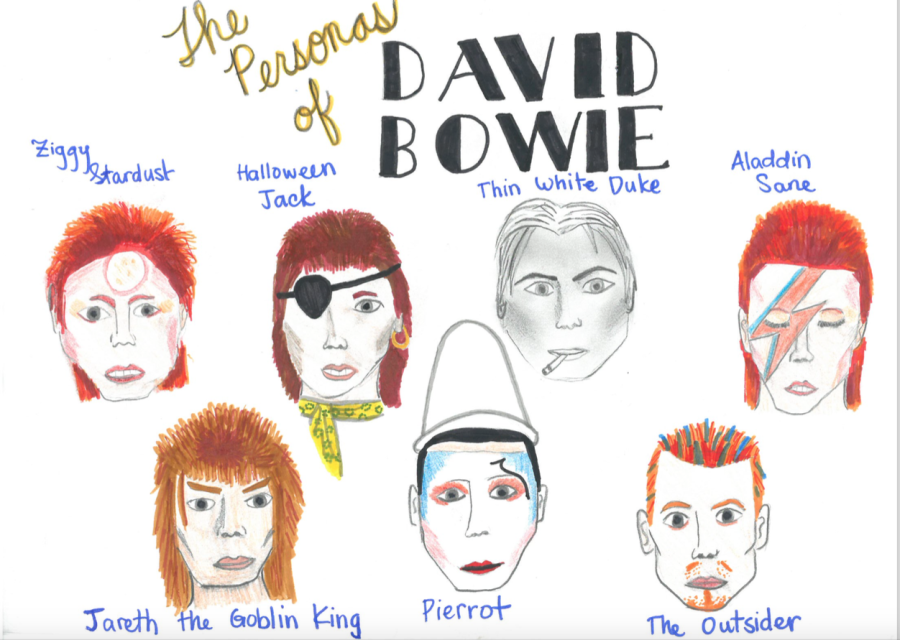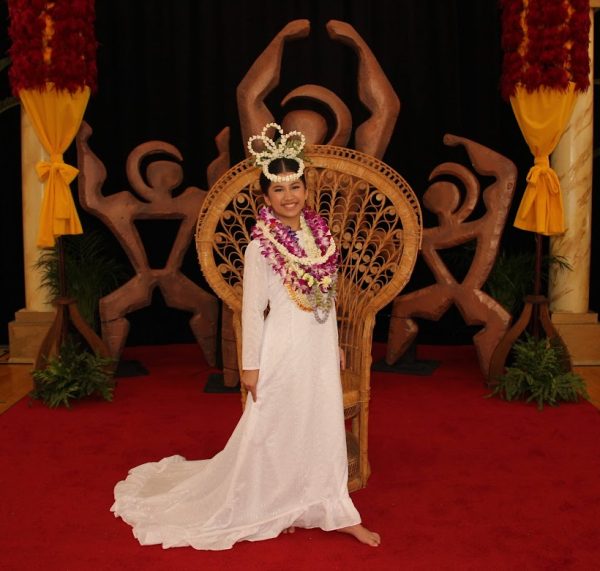Legendary David Bowie returns to the stars
Ziggy Stardust, the “Man Who Sold the World,” and Jareth the Goblin King were among the many personas assumed by the eccentric, influential late rock star David Bowie. A beloved entertainer, fans all around the world cried out to the “Starman” in the sky when Bowie passed away recently after an 18-month battle with cancer.
English teacher Margy O’Kelly, who first heard David Bowie on the radio while living in South Africa, is an avid fan of the late singer.
“Anybody who loved music and records would have known him,” said O’Kelly. “He was such a big part of culture.”
Though he made a deep impression on older music lovers, Bowie’s influence on younger audiences has given them an artist to admire as well.
Born David Robert Jones on Jan. 8, 1947 in Brixton, a district in Southern London, Bowie learned to play the saxophone at age 13. According to biography.com, Bowie was heavily influenced by his older half-brother Terry who exposed him to “the worlds of rock music and beat literature.”
Terry, a schizophrenic, was later admitted to an institution and committed suicide in 1985. Terry had meant a lot to Bowie and his emotions about Terry’s death became the focus of his song, “Jump They Say,” released in 1993.
At age 16, Bowie graduated from Bromley Technical High School, now known as Ravens Wood School. It was here that Bowie got into a fight with a friend, causing his left eye to be permanently dilated and creating the impression that his eyes have different colors.
After graduation, Bowie worked as a commercial artist. After forming connections with bands, Bowie created his own, Davy Jones and the Lower Third.
It was during this period, however, that he coined the last name Bowie to avoid being confused with Davy Jones, a member of a popular pop-rock group of the time called the Monkees.
Bowie went solo and produced an unsuccessful album, causing him to take a break from the music scene. During his hiatus, he lived in a Buddhist monastery in Scotland. He also founded a mime troupe named Feathers.
In 1969, Bowie made his return with the successful of release “Space Oddity.” The song immediately gained popularity and was played during the Apollo 11 Moon Landing on July 20 of the same year. The single seized the 5th place in the United Kingdom and 15th on the US Billboard Charts.
The next two albums released in 1970 and 1971, titled “The Man Who Sold the World” and “Hunky Dory,” were also hits, boosting Bowie higher into the skies.
In 1972, Bowie introduced his alter ego, Ziggy Stardust, with the album “The Rise and Fall of Ziggy Stardust and the Spiders from Mars.” Ziggy’s wild and prophetic attitude, portrayed by Bowie himself, made him a superstar. Many say that the era of Ziggy Stardust signaled a new age of rock music.
After producing more albums and disbanding the Spiders from Mars, Bowie put away Ziggy Stardust and assumed a new look in his 1973 glam metal album “Aladdin Sane,” followed by a cover album of songs he enjoyed as a youngster including tracks by Pink Floyd and Pretty Things.
During the mid 1970s, Bowie hung up his outrageous costumes and took on a mature look, releasing the albums “David Live” and “Young Americans” in 1974 and 1975. In the early 1980s, Bowie recorded the albums “Scary Monsters” and “Let’s Dance.”
Bowie married Angela Barnett on March 20, 1970. Together, they had a son named Duncan Jones, nicknamed “Zowie.” At first, Bowie had wanted Duncan to become a musician. Upon hearing Duncan’s dream to work in the film industry, however, Bowie had him sit down and create storybooks.
Duncan is now a popular Hollywood movie director whose works include the 2011 film “Source Code” and 2016 movie “Warcraft.”
Barnett and Bowie divorced in 1980.
Bowie’s talent also extended into the movie industry, earning him roles in multiple films, including “The Man Who Fell to Earth” and “Labyrinth,” a film by Jim Henson and George Lucas which has become a cult classic.
The next 10 years would prove to be difficult as Bowie’s music career perished with many failed song releases. He bounced back with Bowie Bonds, financial securities he protected using “royalties from his pre-1990s work.”
In 1992, Bowie married Iman Mohamed Abdulmajid, a Somali-American fashion model. The couple had one daughter named Alexandria Zahra Jones. Bowie also had a stepdaughter named Zulekha Haywood from Iman’s previous marriage.
In 1996, Bowie was inducted into the Rock and Roll Hall of Fame and in 2006 received the Grammy Lifetime Achievement Award.
Bowie released his last album “Blackstar” this year on Jan. 8, his birthday. Critic Jon Pareles calls the album “strange, daring and ultimately rewarding… with a mood darkened by bitter awareness of mortality.”
Bowie passed away two days later on Jan. 10.
An inspiration to all, David Bowie’s music influenced several generations of music aficionados, including celebrities Madonna and Iggy Pop.
“He was a trailblazer,” said O’Kelly. “He always played to his creative instinct. I don’t think we’ll see anything of the likes again for a very long time. He will be missed.”

Kailanianna Ablog is a current senior at Sacred Hearts Academy and a third-year Journalism student. She is the president of Korean Club, the Outreach Head...


























